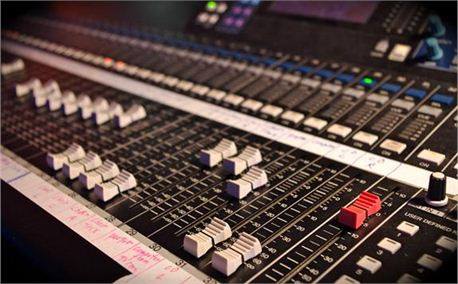
Sound editors work in post production, they sync and ensure all of the films dialogue, music and sound effects systematically come together and sync.
Sound mixers record high-quality audio for the film, they enhance the continuity of the films audio, they are the leaders of the sound production.
Diegetic and non diegetic sound
Diegetic sound is heard by both the audience and character such as dialogue whereas non diegetic sound is only heard by the audience like background music.

Diegetic sound, in this scene we can hear both the voice down the phone that Arthur is speaking to in addition to the New York city traffic outside the window, the use of this makes the scene more immersive as the sounds involved would be heard by the characters but are normally not heard by the audience.

Non diegetic sound, in the closing scene of Joker we can hear music that has been edited over the scene in post production as an outro for the film, however the Arthur cannot hear this as he solemnly walks away from the camera.
Synchronous and asynchronous sound, synchronous sound is sound that has been matched with the action/ movement being shown on screen, asynchronous sound is not matched with a visible source of sound on screen, it is most commonly used when the director creates tension, because we can hear a sound but not its source. This adds an aspect of apprehension, or sometimes the audience cannot hear the sound the character does on screen.
Needle drop moments are when music that is not from the world/ pre existing song is used to underscore a scene. This can either enhance the mood or juxtapose it, for example Joker or American psycho. The emotions and associations had with a particular song can also be carried over so we create the emotions and associations with that scene too.
Sound effects are artificially created or enhanced sounds used to emphasise and express an action, mood or feeling. Foley artists create sound effects, they’re filmed in a sound proof studio to prevent background noise to get a clear sound, these sounds are then edited in post production.
Leitmotifs are a reoccurring short musical sound, they condition the audience and prepare them for the intervention, arrival or action of a particular element of the film. There are leitmotifs for characters (Star Wars and Darth fader), settings (Harry Potter and the wizarding world), emotions (Up and love) and evolution of characters
Sound bridges are a type of sound editing occurring when sound carries over a visual transition such as L-cuts and J-cuts. L-cuts happen when the audio from the previous scene carries over, then the visuals shift. J-Cuts occur when the next scenes audio plays before the image changes. They help with the flow of the film.
Narration/voiceovers tell the audience what content we need to know in order to follow the story, however they can commonly be unreliable as if from a characters perspective their narration can be bias. Voice overs are a sound device where the audience hears the voice of a character/ narrator speaking but the character itself is not speaking on screen. Narration is first person.
Score/underscore the score for a film is the theme music that has been composed specifically for the specific film and enhances the mood/themes of what we see on the screen, the underscore for a film is the music played underneath the sequences on screen often mixed with sound effects and dialogue, the underscore also enhances the mood. In the film Casablanca there is prominent underscore of an orchestra, mainly violins that play over the scene of the realisation only one would be on the plane. This has a strong effect on the audience as it creates a prominent mood of romance and sadness while additionally making us feel sympathetic towards the characters.
Sound perspective refers to the perceives distance between the audience/camera and the sound source through its volume, timbre and pitch. The concept of sound perspective is prominent in the film Munich as the climax of the film itself is told only through sound affects. We can tell what is happening in the scene singlehandedly from the sounds we hear and without looking at the screen. This is because in the background we can hear police sirens telling us that what the characters are doing is illegal, while the more prominent sounds of the daughter of the man who is trying to be killed and the cars driving past.
My favourite film soundtrack is from the film 10 things I hate about you, the song is called “Bad Reputation” and it opens the film. The song itself is a rock/pop song that was very popular around the time the film was made and released (1999). Its my favourite because the music is not specific to the film but whenever I hear the song I always think about the film. Additionally, the song fits in very well to the protagonist in the film as well as the story line as the movie is a coming of age teen movie which the song reflects well.